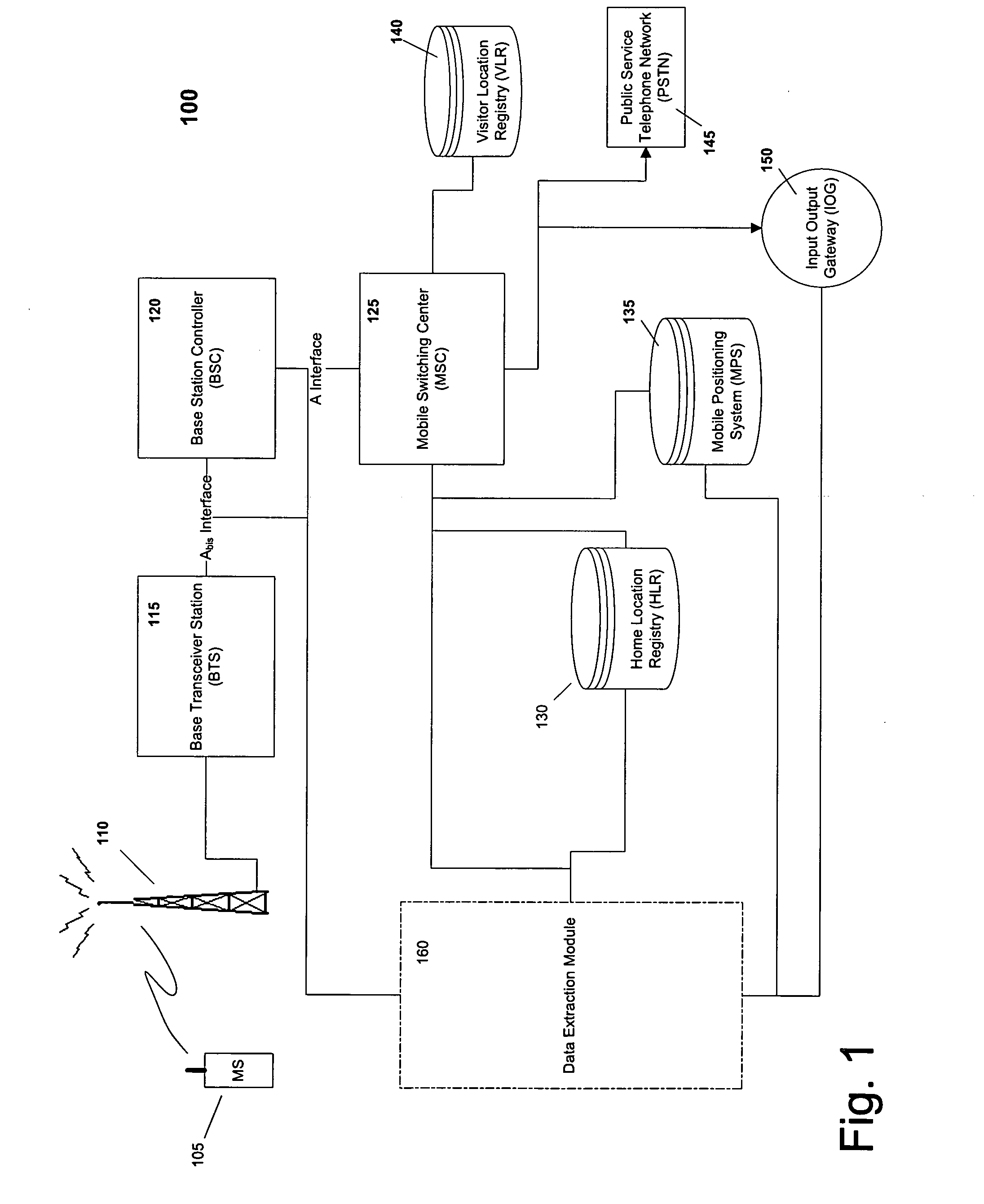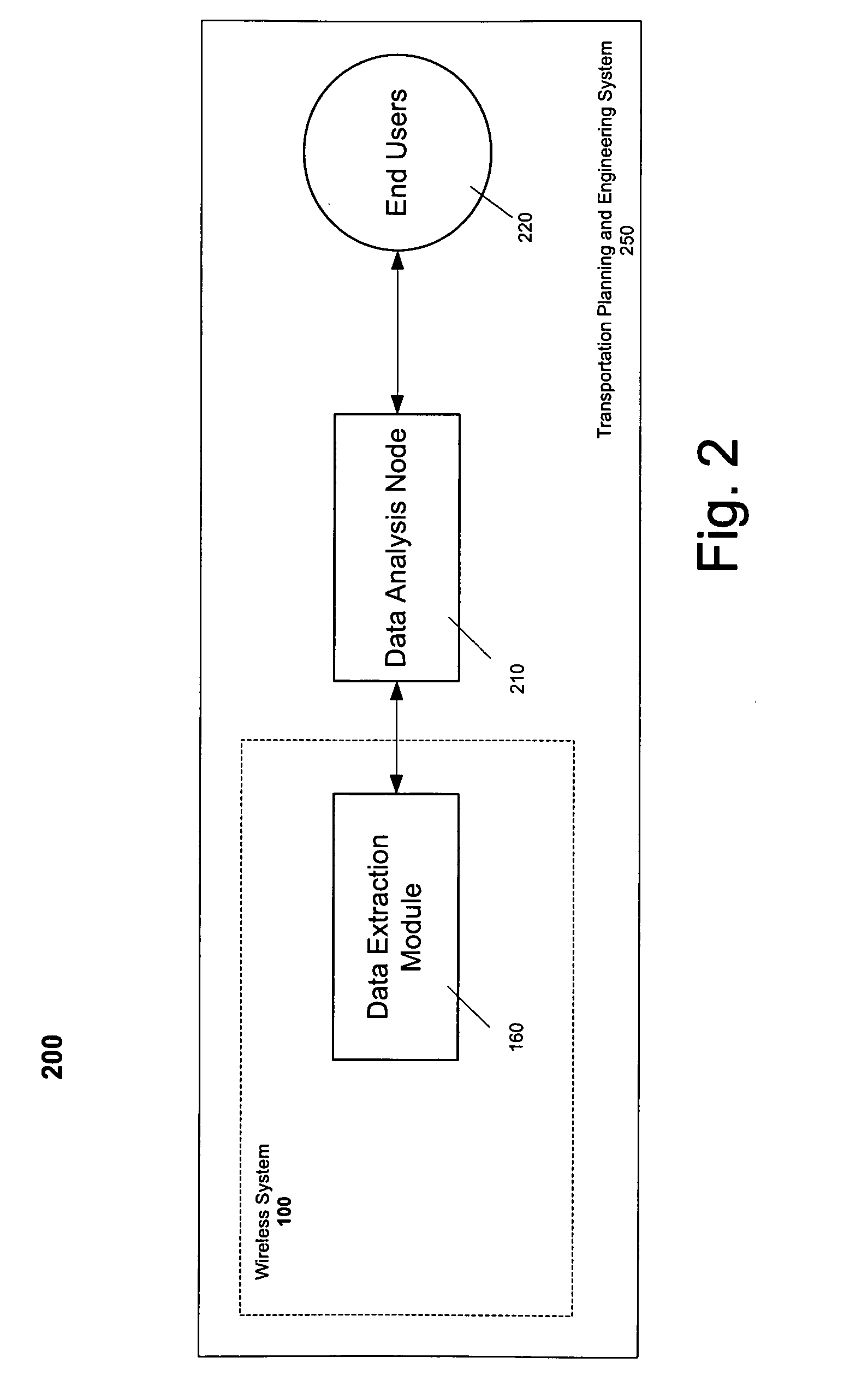Method and system for using cellular date for transportation planning and engineering
a technology of applied in the field of system and method for using wireless telephony network data for transportation planning and engineering, can solve the problems of high cost of data collection using traditional methods and traditionally difficult to capture data
- Summary
- Abstract
- Description
- Claims
- Application Information
AI Technical Summary
Benefits of technology
Problems solved by technology
Method used
Image
Examples
Embodiment Construction
[0033] Exemplary embodiments of the present invention provide systems and methods for using data from a wireless telephony network to support transportation planning and engineering. Data related to wireless network users is extracted from the wireless network to determine the location of a mobile station. Additional location records for the mobile station can be used to characterize the movement of the mobile station: its speed, its route, its point of origin and destination, and its primary and secondary transportation analysis zones. Aggregating data from multiple mobile stations allows characterizing and predicting traffic parameters, including traffic speeds and volumes along routes.
[0034]FIG. 1 depicts an operating environment in relation to a wireless telephony network 100 in accordance with an exemplary embodiment of the present invention. Referring to FIG. 1, mobile station (MS) 105 transmits signals to and receives signals from a radiofrequency transmission tower 110 whil...
PUM
 Login to View More
Login to View More Abstract
Description
Claims
Application Information
 Login to View More
Login to View More - R&D
- Intellectual Property
- Life Sciences
- Materials
- Tech Scout
- Unparalleled Data Quality
- Higher Quality Content
- 60% Fewer Hallucinations
Browse by: Latest US Patents, China's latest patents, Technical Efficacy Thesaurus, Application Domain, Technology Topic, Popular Technical Reports.
© 2025 PatSnap. All rights reserved.Legal|Privacy policy|Modern Slavery Act Transparency Statement|Sitemap|About US| Contact US: help@patsnap.com



